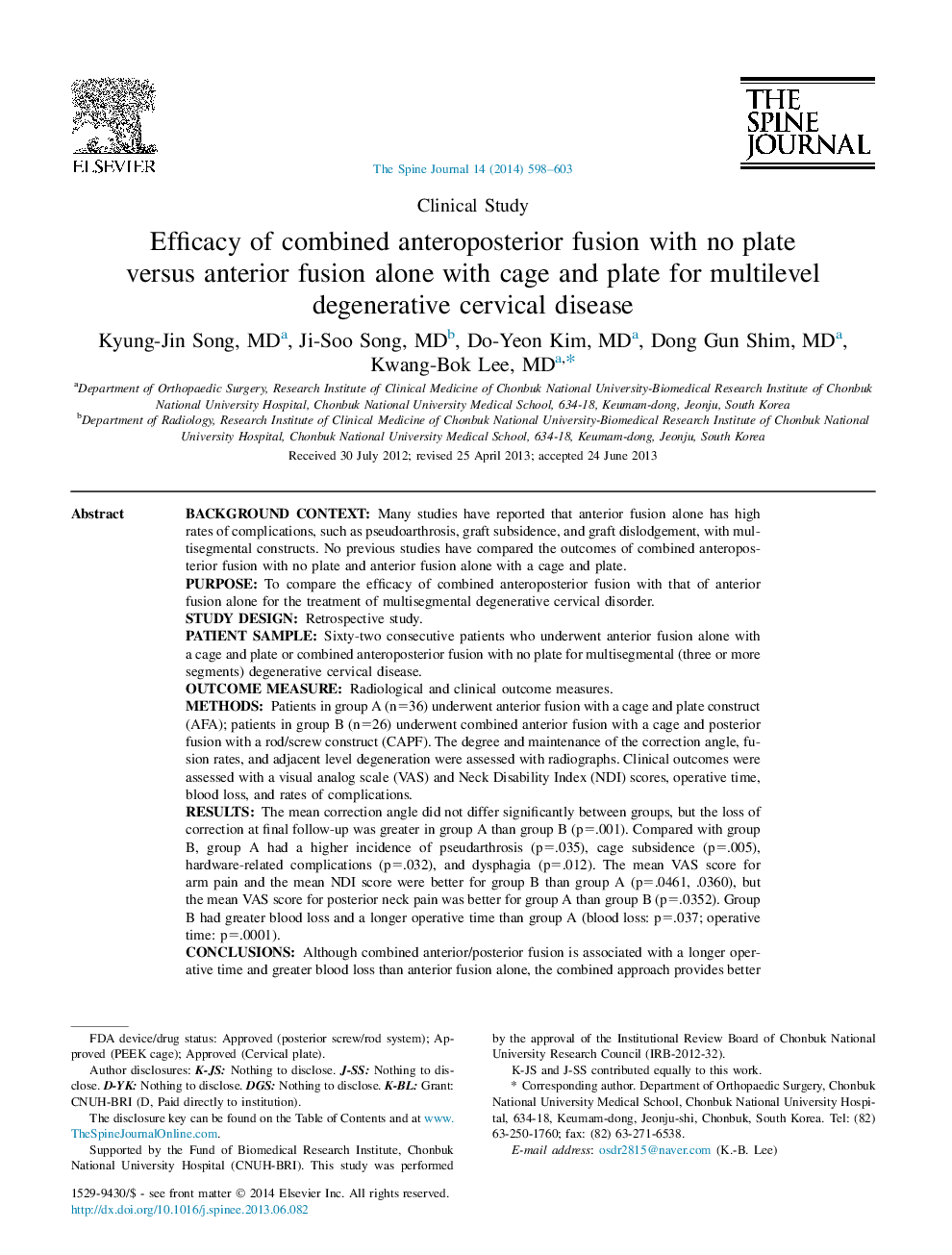| Article ID | Journal | Published Year | Pages | File Type |
|---|---|---|---|---|
| 4097015 | The Spine Journal | 2014 | 6 Pages |
Background contextMany studies have reported that anterior fusion alone has high rates of complications, such as pseudoarthrosis, graft subsidence, and graft dislodgement, with multisegmental constructs. No previous studies have compared the outcomes of combined anteroposterior fusion with no plate and anterior fusion alone with a cage and plate.PurposeTo compare the efficacy of combined anteroposterior fusion with that of anterior fusion alone for the treatment of multisegmental degenerative cervical disorder.Study designRetrospective study.Patient sampleSixty-two consecutive patients who underwent anterior fusion alone with a cage and plate or combined anteroposterior fusion with no plate for multisegmental (three or more segments) degenerative cervical disease.Outcome measureRadiological and clinical outcome measures.MethodsPatients in group A (n=36) underwent anterior fusion with a cage and plate construct (AFA); patients in group B (n=26) underwent combined anterior fusion with a cage and posterior fusion with a rod/screw construct (CAPF). The degree and maintenance of the correction angle, fusion rates, and adjacent level degeneration were assessed with radiographs. Clinical outcomes were assessed with a visual analog scale (VAS) and Neck Disability Index (NDI) scores, operative time, blood loss, and rates of complications.ResultsThe mean correction angle did not differ significantly between groups, but the loss of correction at final follow-up was greater in group A than group B (p=.001). Compared with group B, group A had a higher incidence of pseudarthrosis (p=.035), cage subsidence (p=.005), hardware-related complications (p=.032), and dysphagia (p=.012). The mean VAS score for arm pain and the mean NDI score were better for group B than group A (p=.0461, .0360), but the mean VAS score for posterior neck pain was better for group A than group B (p=.0352). Group B had greater blood loss and a longer operative time than group A (blood loss: p=.037; operative time: p=.0001).ConclusionsAlthough combined anterior/posterior fusion is associated with a longer operative time and greater blood loss than anterior fusion alone, the combined approach provides better maintenance of sagittal alignment, a higher rate of fusion, a lower incidence of cage subsidence and adjacent level disease, and better VAS and NDI scores.
